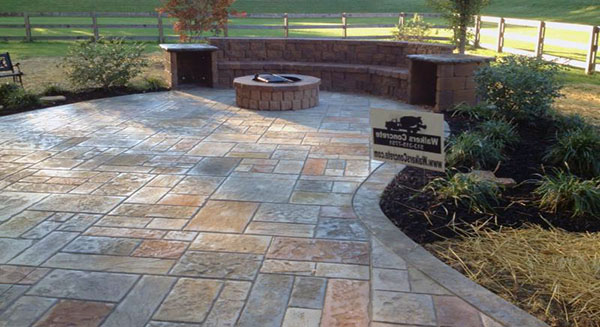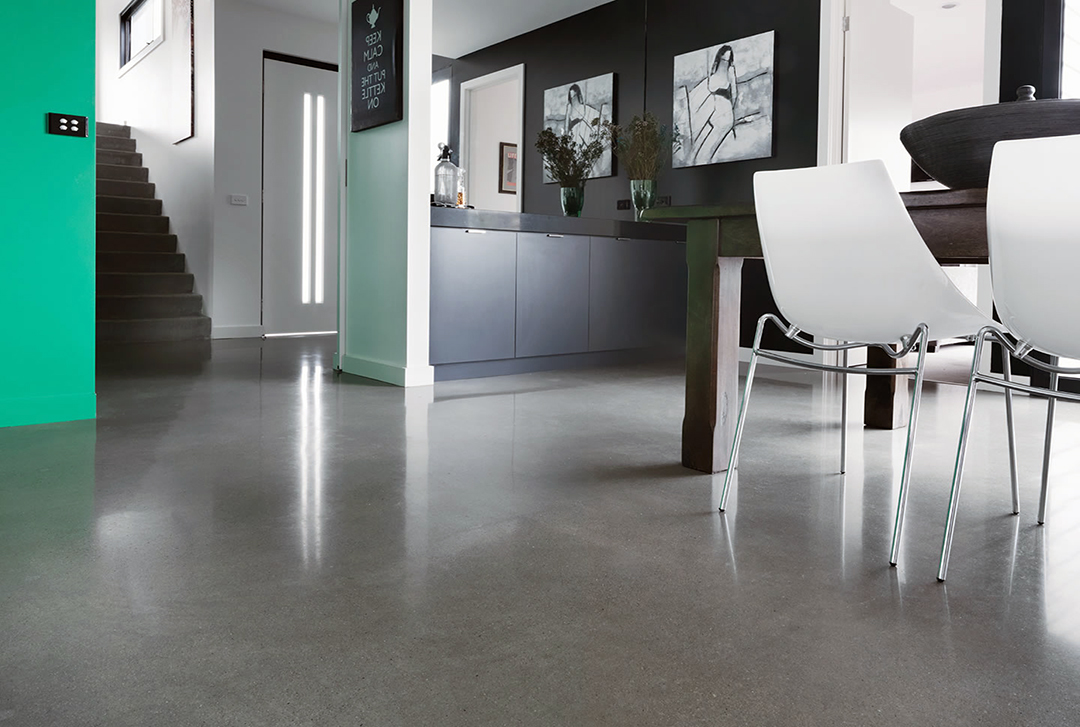If you’ve never heard about stamped concrete and are about to start a home improvement or renovation project, this is a great opportunity to learn about this unusual and interesting material, which can be of huge help to future projects, both in achieving the look you’ve imagined and saving on your materials budget.
Stamped concrete is, much like the name suggests, a kind of concrete which is used for a lot of projects, such as flooring renovations and tiling, because it is made to look like other materials, such as stone and brick, achieving the same look for a fraction of the price.
The ability to stamp concrete into any pattern, which in turn gives it the ability to mimic almost any material, is a great advantage, which adds to the versatility of this great material, and thus to its popularity.
However, the possibility to stamp concrete into any desired pattern isn’t its only advantage. Stamped concrete patios, for instance, also benefit from concrete’s other features, such as high resistance and durability, need for little maintenance and the possibility not only to stamp any pattern, but also make any shape out of this material, which, combined with a much smaller cost, put stamped concrete at the top of the list of materials which are chosen more often for patio renovations.
As you probably know, decorative patios are backyard lounge areas, where you can host barbecues, have parties and just enjoy the good weather when it comes. While the furniture is really what makes it a lounge area, and defines the area’s uses, the pavement is really what makes the whole look.
Originally, the flooring of patios was fashioned by landscaping the area, or adding some kind of slab, such as brick or stone. However, that changed with the invention of stamped concrete in the 1970s, which allows for an easier and less expensive installation, and can virtually achieve any look you desire, anytime you want, even on top of existing flooring or slabs.
But while you can mimic brick and stone, and even crushed earth and leaves with a stamped concrete patio and yet maintain a stable base for your furniture to be safely placed upon, without having to worry about edges or fissures, this is only entirely true when and where the weather is generally nice.
Concrete does not have a lot of weaknesses or drawbacks. It is, however, affected by the weather, cracking in extremely low temperatures, something which makes a stamped concrete patio a bad idea for those who live in colder weather areas or those which do experience extreme conditions.
Also, unlike real stone and brick, the stamp is prone to fading, which means that maintaining the initial look of the patio may not always be possible, once again, depending on what the weather’s like where the patio is installed.
This is, however, a relatively minor drawback, which doesn’t necessarily affect most people, so if your home is somewhere where inclement weather is infrequent, then you may find that stamped concrete is a great choice for your new patio, especially as it can save you a nice penny which you can opt to use for other home improvement projects, which you may have had to give up on due to budget constraints.










